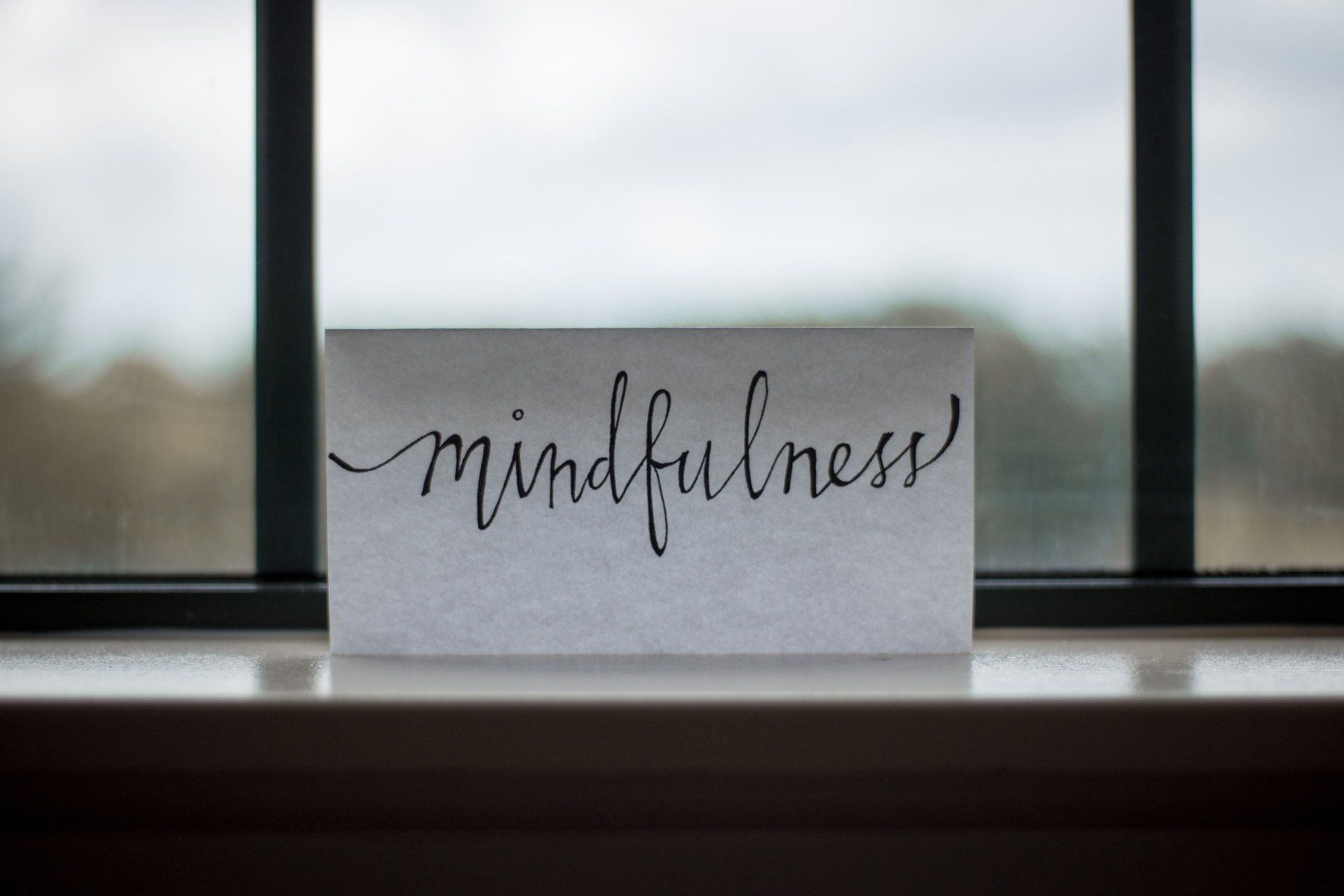Blog Layout
Change Your Self-Talk
Mar 30, 2021
Examine your self-talk to be sure it is serving you well!

We all have an inner voice that comments on what we are doing, for better or for worse. Psychologists refer to this inner dialogue as self-talk. You are always going to engage in self-talk, but it doesn’t have to be negative. You can learn to notice it and reprogram it so that it is not negative but rather supportive of the changes in your life that you’re trying to make.
Negative self-talk is very common. Most of our self-talk consists of beliefs programmed into us when we were children. We heard these beliefs so often, or in such emotionally intense situations, that now we believe them and repeat them to ourselves whenever the occasion arises.
But do you really want major decisions about your life made by a 4-year-old or an 8-year-old? That’s what’s happening when we accept negative self-talk as the truth about us and about life. Some of our basic attitudes towards ourselves are rooted in unexamined childhood programming.
Self-talk tells us what to do and how to feel about events and situations. A lot of self-talk feeds us valuable information that serves us well, that helps us succeed and even ensures our survival. For example, “Look both ways before crossing the street” and “Stand up for yourself” are constructive reminders.
But other self-talk undermines us and keeps us from fully experiencing parts of our personality. Your inner voice may be telling you things like this:
I know it won’t work.
It’s just no use.
I never have enough time.
I never know what to say.
Everything I touch turns to bleep.
I wince whenever I hear an adult tell a child something like, “You’re stupid,” or “Academics are just not your strength.” If you want a person to act stupidly, both as a child and as an adult, telling them they’re stupid is a reliable way to program them to do so.
Working on your self-talk is a good way to challenge the idea that there’s some inherent flaw in your personality. If you have deficits, you are not doomed to live with them forever; you can change your programming. When that changes, you may find you have hidden strengths where previously you had problems.
Start paying attention to your self-talk. Write down some of the attitudes expressed during self-talk. Ask yourself, would I say to a friend the things I say to myself? Probably not. As adults, we know that saying negative things is hurtful and destroys friendships. So why do we say such things to ourselves?
Self-Talk and Conflict Resolution
Many of us repeat self-talk phrases that oppose our efforts at conflict resolution. For example, here are some self-talk phrases about conflict that many people accept without thought:
Whenever anybody says anything bad about me, I must correct them by pointing out their personal flaws.
The best defense is a good offense.
There are winners and losers—and I’m going to be a winner.
People who disagree with me are opponents to be overcome.
Once I’ve picked the best option, I need to hang on to it and defend it.
These phrases all describe a win/lose model of conflict resolution, and they all make it harder to reach a mutually acceptable solution to the conflict. If you approach conflict with these attitudes, your relationship will be the loser.
Moving to Positive Self-Talk
So how do we change negative self-talk? Using the computer programming analogy, we need to overwrite the negative programs and replace them with a new program. It sounds easy, but it is hard work.
Here are the basic steps in reprogramming your negative self-talk to positive self-talk:
1. Watch for the self-talk statements about yourself.
The first step is to pay attention to your self-talk and identify anything that is negative. You won’t be able to change your negative self-talk without noticing it.
Some people find it helpful to keep a self-talk log. Carry a small notebook, and every time you notice negative self-talk, write it in the log.
2. Monitor the self-talk of people around you.
Sometimes it is easier to see the impact of negative self-talk by noticing its effect on other people. Obviously, you won’t be able to listen in on their inner self-talk, but people often speak their self-talk out loud: ‘I’m just not good at those sorts of things,” “I haven’t got time to deal with that,” “I’ve always wanted to do that, but I just don’t have what it takes.” How does their self-talk limit them? Do they stop doing things they should or want to do? Do they avoid new behaviors that might be helpful or just plain fun?
3. Identify negative self-talk that you want to change.
Next, identify those areas you want to work on. A lot of self-talk is useful. What kinds of self-talk are giving you a problem?
Since we’re working on conflict resolution between loved ones, here are some of the issues and skills you might be thinking about:
Accepting that the other person has a different emotional reality
Listening until you understand the other person—and they feel understood
Learning to express feelings rather than judgments
Avoiding seeing the other person as an adversary
Learning not to personalize everything that is said about a situation—being less defensive
Believing that there are many possible solutions, not just the one you thought of
If you have negative self-talk that makes it hard to make these changes, those phrases might be a place to start your work to reduce negative self-talk.
4. Eliminate internal negative chatter.
Once you’ve learned to notice your negative self-talk, you can work on actively resisting it when it occurs.
Here are a couple of things that can help eliminate negative self-talk:
Some people wear a rubber band and snap themselves with it whenever they start to engage in negative self-talk. (I’ve never tried this, but I’m told it works.)
Some people set up an internal signal, such as telling themselves, “Cancel, cancel,” which tells them to stop the negative self-talk.
5. Replace negative self-talk with positive self-talk.
You are always going to engage in self-talk, but it doesn’t have to be negative. The trick is to use it to help you. Change your self-talk so that you program yourself with the behaviors and attitudes that help.
Look for phrases that really resonate with you, things you really feel. Here are some phrases that you could use:
I trust that [person] loves me.
We have worked things out before and will again this time.
I can control myself and my behavior.
I trust myself to speak up for myself.
I have everything I need to be able to do this.
I can stay right here and remain calm and confident.
I choose not to react and be pulled into what is going on.
I trust I can talk to my partner about this later.
I can ask for help.
I am not alone.
It is okay for me to have whatever feelings I have.
I can choose how I act.
If I trust myself, I can act differently.
I am a good listener. I am attentive, interested, and aware of everything that is going on around me.
I have the courage to share my feelings. I take responsibility for everything I say and do.
Some of these phrases may hit you as overly sweet, while others give you a feeling of hope and real promise. Just ignore the too-sweet ones and pay attention to the ones that give you a charge of energy.
You need to find your own phrases to address the issues you are working on. You need the emotional investment that comes from choosing phrases that have meaning for you. Write your positive self-help phrases in the present tense, as if the desired change has already taken place.
Now try identifying the issues you want to work on, then write down the positive self-help phrases that will help you with these issues.
The essential ingredient in any effort to change negative self-talk is repetition. You’ve been repeating the old self-talk for years, and it will take a while to overwrite this programming. Some people have even reported that it seemed like the old programming tries to talk them out of the new programming. It’s important to select positive self-talk phrases that have meaning and power for you, phrases that you like hearing. Persist!
Here are some of the techniques people use to program positive self-talk phrases:
Mirror, mirror on the wall: First thing in the morning, as you are in the bathroom preparing for your day, repeat your positive self-talk phrases aloud to your image in the mirror. Do this a minimum of 10 times. Say the phrases with energy and enthusiasm.
Sticky notes: One way to remind yourself of your new positive programming is to put sticky notes up in visible places. The note doesn’t have to contain the whole phrase, just enough of a cue to trigger the full phrase in your mind.
Index cards: Some people pit their positive self-talk phrases on 3" × 5˝ index cards. During the day, they take out the cards and read the phrases aloud.
Tape talk: One of the most effective ways to reprogram your self-talk is to play audio recordings of the new phrases. There are professional recordings available, but if you want to use your own personal phrases, you can make your own. Most smartphones can record and play your phrases. People in the field claim that playing these recordings quietly in the background while doing something else is a particularly effective approach.
For more on the Author James Creighton, Ph.D.

By Maggie Lavey
•
10 Aug, 2021
Mindfulness encompasses a variety of definitions although most are similar in concepts. Mindfulness is described as an awareness that arises from purposely paying attention in the present free from any judgements. Mindfulness is a state of awareness of ones emotions, thoughts, and sensations when each occurs. A third definition of mindfulness is a nonjudgmental state of awareness of present experiences. Various interpretations exist dependent on the context in which mindfulness is being examined. For example, mindfulness can be examined in improving emotional regulation and as a coping tool for stress management. Mindfulness is being in the present moment in ones body in a fully conscious state, aware of ones own experiences without judgement or narrative- just being in the moment in the here and now with an acceptance of how things are; being aware of our own thoughts, emotions, sensations without being caught up in them- an outside observer of self with an awareness of the moment. Mindfulness can be used throughout the day when walking, eating, and whenever feeling emotionally “charged” to step back and observe internal experiences. Yoga, meditation, and breathing are a few ways to cultivate mindfulness. Being mindful allows for intentional actions and responses rather than living on autopilot without being aware. The benefits of mindfulness are plentiful, and a regular practice is beneficial for enhancing wellness. Being able to stop and really get into the here and now and out of automatic unconscious living enhances feelings of well-being and an ability to respond more effectively with emotional control. Mindfulness can improve experiences and interpersonal relationships alike. Mindfulness is Intentional Living. Give it a try and see what happens. How do you define mindfulness? How do you cultivate mindfulness in your daily life?

By Stephanie Pappas
•
09 May, 2021
Each day in the United States, an average of 3.1 million COVID-19 vaccines are going into people’s arms. According to an April 9 White House briefing, a quarter of the country's adults are now fully vaccinated. The pandemic is not yet over, but vaccination could soon yield a much more normal life, especially for those who have been vaccinated. The Centers for Disease Control and Prevention, for example, now recommends that fully-vaccinated people can visit with each other indoors and travel without quarantining. But for many, reopening comes with its own set of anxieties. According to APA's Stress in America polling, around half of people say they feel uneasy about readjusting to in-person interaction post-pandemic. Ellen Hendriksen, PhD, a clinical psychologist at Boston University's Center for Anxiety and Related Disorders and author of How to Be Yourself: Quiet Your Inner Critic and Rise Above Social Anxiety , is an expert at clinical strategies for calming anxiety. She spoke to APA about what's driving post-pandemic anxiety and how psychologists can best help. What do you think is driving the anxiety many people are feeling about reopening? Anxiety is driven by uncertainty. There is so much uncertainty right now, from the vaccine roll-out to society reopening to the new normal workplace to the virus and the variants themselves. Every day there is more evidence that vaccines keep us and people around us safe, but there are lingering questions about how long immunity lasts, how susceptible kids are to COVID-19, and when they will get vaccinated. Nobody alive today has ever emerged from a global pandemic into a digital world and navigated this before. We're making it up as we go along, so of course we're anxious. Here at the Center, we have the longest waitlist in our 25-year history. So many people are emerging from the pandemic feeling exhausted, burned out, anxious, or depressed. Collectively, our resources are low, which makes it harder to navigate the layers of uncertainty. How can people handle social anxiety and awkwardness around different levels of comfort as places reopen? The fact that reopening is a moving target makes it difficult to align with other people. You and your bubble might be ready to dine in at a restaurant or get on a plane, but the family next door might have a child who is immunocompromised and is living as they were in January. There are more variables to manage compared with before the pandemic. Plus, social anxiety is driven by avoidance, and we've all been avoiding social interactions for the better part of a year. The fact that we're all rusty is going to make us feel wobbly as we re-enter. It's OK to say we don't know how to do this, and it's OK to ask people what they're comfortable with. That normalizes the uncertainty and awkwardness, and it's quite validating to say, “What are we doing?” or “How does this work?” It can help you feel like you are united with the other person against this larger problem, as opposed to negotiating one against the other. This is a strategy borrowed from couples therapy, where it is often highly effective. How can people feel more comfortable with re-entry? There's one question I've been getting over and over from people who struggle with social anxiety. They'll say, "I did so much work pre-pandemic to get to the point where I could give a presentation or raise my hand in class." They’re worried they’ll be back at square one when they are again in large groups. But social confidence is like a muscle. If you have done work on your social anxiety in the past, that architecture is still there. It will feel awkward at first, but it will come back faster than the first time around. As for feeling comfortable returning to everyday activities, there are dozens of points of re-entry. There will be a first time on public transportation, a first time in someone's house, a first time taking a rideshare. We'll work our way up to large gatherings. Just because you feel rusty or nervous doesn't mean you're doing it wrong. It means you're getting back out there. Your brain will recalibrate with experience. We all need love, support, and community. Studies show that the quality of our relationships predict our future health, happiness, and even longevity, so it's worth it to push ourselves a little to get the interaction we all need, even if we are the most introverted of introverts. What should psychologists keep in mind for helping their clients right now? Psychologists have a big job ahead of us. It may be hard to balance supporting and pushing our clients simultaneously. It’s important to support each individual’s comfort level and choices, but psychologists also need to notice and address life-limiting avoidance. These are anxious, uncertain times, but there is also a sense of hope and renewal. It is an honor that we as psychologists get to play a leading role. Article by Stephanie Pappas from the American Psychological Association (APA)

By Steven C. Hayes, Ph.D.
•
29 Apr, 2021
Imagine you are sitting in a car, and you are driving down a lonely highway. Suddenly, in the middle of nowhere, a warning light goes off. Your oil pressure is very low. If you just ignore it and continue your drive, you run the risk of doing serious damage to your engine. You know you can get a tow, but this is going to take a while. As you are considering your next step, you suddenly remember a trick about how you can short circuit the warning light. This would not change anything about the engine—it would still be starved for oil—but the low-pressure signal would no longer be blinking on your dashboard, and you could ignore it more easily. Here’s the question: Should you do it? Unless you are seriously intoxicated (at which point you shouldn’t be driving at all), you won’t hesitate to say “no” to that impulse. Rightly so. Turning off the light will not do anything for you. The light is just the messenger, and not the problem in itself. Instead, you would be better advised to take in the information and deal with the situation. This is easy and intuitive to understand when it comes to external problems like car maintenance. It’s much more confusing, however, when the problems occur internally. When we are confronted with difficult emotions like anxiety, depression, stress, grief, anger, or loneliness, we are quick to search for the off-button on our emotional dashboard instead of taking in the messages they contain. Make it stop! Give me the wine and cigarettes. Let me cancel this appointment. Engage me on social media. Show me the movies and video games. Do whatever, but just make it stop! This is often our first response when difficult emotions show up: We try to mute the signal. But emotions are not the problem. They are merely messengers. And the messages they carry deserve at least to be heard. They often contain important lessons, and can call us to helpful actions. Often they show us opportunities. What Emotions Can Signal Fear might show us that danger is up ahead, and we better prepare ourselves. Loneliness might urge us to prioritize close relationships. Grief might open us up to what is important and meaningful to us, while calling out for social connection and support. Your dashboard doesn’t need to be covered up. It needs gentle attention. No, the dashboard isn’t everything—you still have a road to see and navigate. When emotions arise, you can ask yourself: “What am I feeling right now?” and “Where can I feel it?” and “What does my emotion ask me to do?” and “What does this suggest I am yearning for?” No one turns their driving over to a dashboard, but questions like these help our emotions play their proper role. If it were just negative emotions, this “turn off the indicator” move would be bad enough, but we are similarly incompetent when it comes to positive emotions. Imagine noticing on your car’s dashboard that your fuel tank is full. Oh, joy! You want it to stay this way, and so you decide to rewire so that the gauge always remains full. And people avoid positive emotions too! When we feel joy, we sometimes focus on how we will feel when it goes away, so we try never opening up to joy at all. That would be like the person who just disconnects the fuel gauge altogether so that she will never be disappointed when the fuel runs out because she never allowed herself to notice it was full in the first place. All of this is self-defeating, and yet it’s exactly what many of us do when we feel happy or sad or anxious or hopeful or depressed or satisfied. We like feeling this way, and never want it to stop, and so we cling onto this pleasant feeling, in the hopes of never losing it. Or we detune so it won’t be noticed when it stops, as if being numb is the definition of happiness. We dislike feeling this way, so we push it away as if feelings are the enemy. Feelings are not just about like and dislike. They are how our past and present impact us. They help train our ability to notice what is present, based on what we’ve experienced in the past. They’re like dashboard gauges that help us adjust to the challenges of our life journey. Emotions are temporary. They aren’t meant to be avoided, nor are they meant to be clung to. They are meant to come and go, flowing through you in their own time. They contain important lessons when things are off, and beautiful rewards when things fall into place. Allowing emotions to be there when they occur, to listen closely to their message, to feel them fully with neither clinging nor needless defense, allows them to serve their proper role. Your emotions are not the problem, so feel fully, embrace the change, move forward, and learn how to drive. For more on the Author: Steven C. Hayes, Ph.D.


